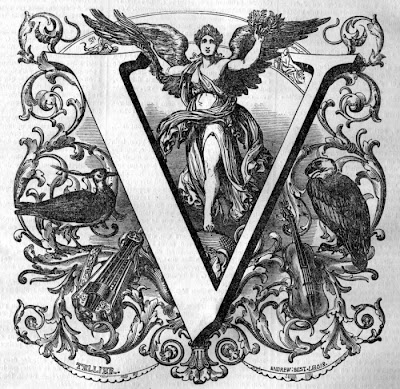
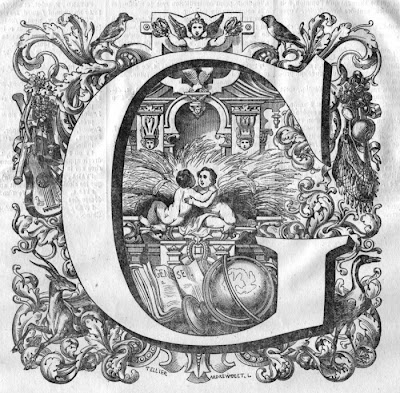
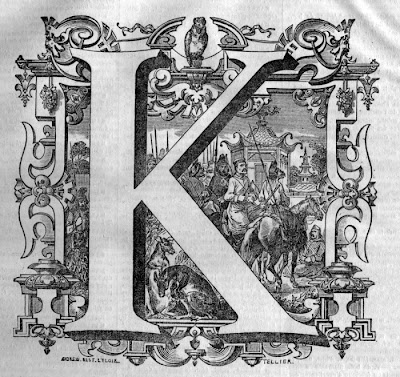
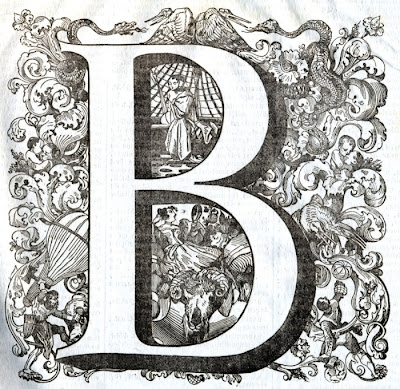
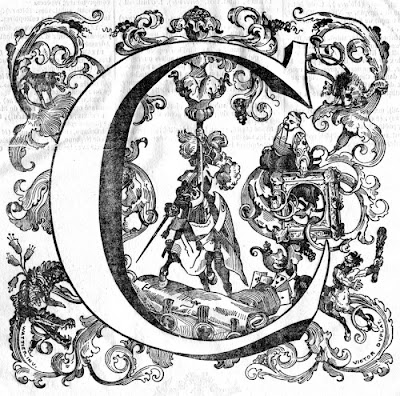
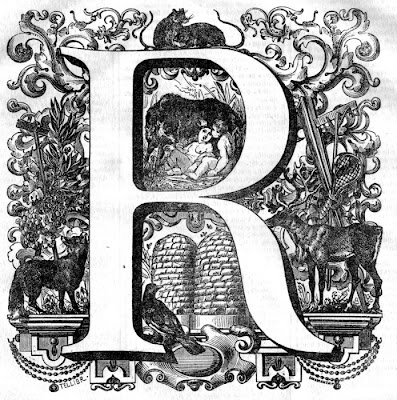
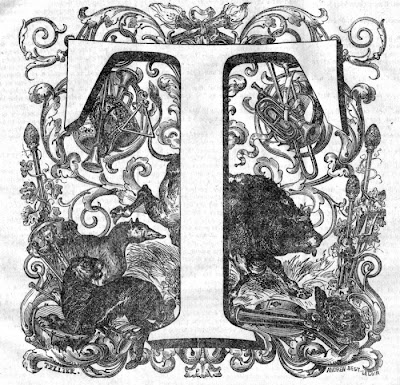
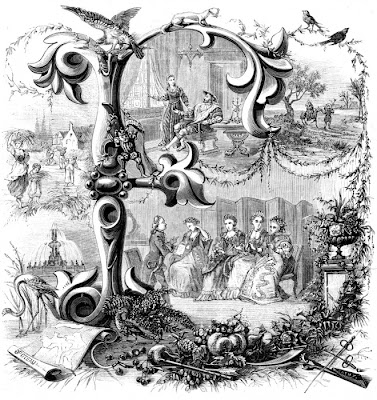
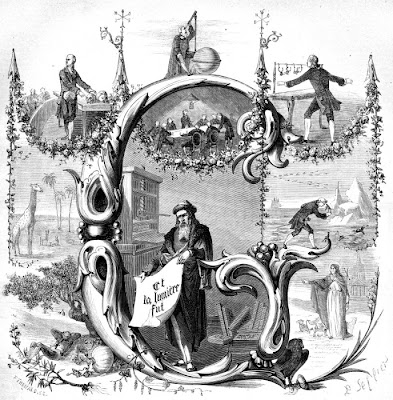
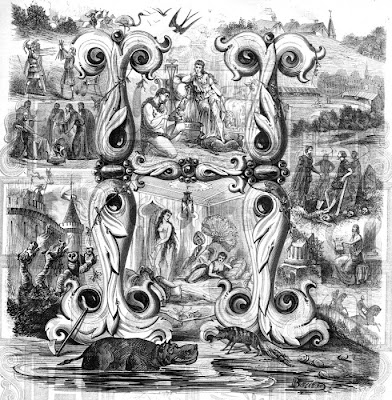
The first 7 ornamental lettrines (I continue to support our co-opting of this french word) are by Napoléon Landais from either his 'Dictionnaire Général et Grammatical des Dictionnaires Français' (1834) or his 'Petit Dictionnaire Français Portatif' (1840).
The last 3 lettrines are from 'Le Grand Dictionnaire Universel' (1865) by Pierre Larousse.
The Université Pierre-Mendès-France in Grenoble have a database called 'Art Dico' in which the iconographical elements of 19th century french dictionaries are collected. Actually, we are told that the images above are not really lettrines (illuminated letters); rather they are called iconophors - something of a neologism to describe an iconic letter together with surrounding pictures that start with that letter (apple = 'A' etc). There is a fair bit of english available and it's interesting to browse around - mouseover the website images to discover the name of each related picture. It's all easy. For instance, in one of the letter 'G' images above, you can see Gulliver and Galileo if you look hard enough. Some are more esoteric/french/difficult than others. To date they have 64 Dictionaries, 363 Ornaments and 1048 Items uploaded.
"In the fifteenth century, the inception of printing changed the way text was reproduced and transmitted. The old ornamentation, however, remained, though its original function as a means of glorifying the sacred word was progressively disappearing. Late in the seventeenth century, a few French dictionaries began offering ornamentation embodying a particular encounter of letter and image: the initial-letter introducing the A section, combined the letter A and an illustration of some entity whose name starts with A. This was congruent with the old principle of giving the reader a glimpse, on the threshold, of what is to come."
No comments:
Post a Comment